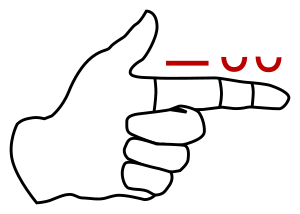Hexameter facts for kids
Hexameter is a special kind of line used in poetry. It is usually made of six parts, which are called "feet." This style of writing was very common in old Greek and Roman poems. Famous stories like the Iliad and the Aeneid were written using hexameter. Ovid's Metamorphoses also uses it. You don't often find hexameter in English poems.
Contents
What is Hexameter?
Hexameter is a way of writing poetry where each line has six main beats or sections. These sections are called feet. Think of it like a song having a certain rhythm. In poetry, the rhythm comes from how long or short the syllables are.
Dactylic Hexameter Explained
The most common type of hexameter is called dactylic hexameter. In this style, each of the six "feet" in a line is usually a dactyl. A dactyl is a poetic foot with one long syllable followed by two short syllables. It sounds a bit like the word "strawberry" (STRAW-ber-ry).
However, poets often changed things up a bit. Instead of a dactyl, they could sometimes use a spondee. A spondee is a foot with two long syllables, like the word "football" (FOOT-BALL).
How Dactylic Hexameter Works
In dactylic hexameter, the first four feet can be either a dactyl or a spondee. This gives the poet some flexibility. The fifth foot is almost always a dactyl. This helps to create a specific rhythm as the line ends. The very last foot is usually a spondee.
So, a typical line of dactylic hexameter often follows this pattern:
- Foot 1: Dactyl or Spondee
- Foot 2: Dactyl or Spondee
- Foot 3: Dactyl or Spondee
- Foot 4: Dactyl or Spondee
- Foot 5: Usually a Dactyl
- Foot 6: Usually a Spondee
The last syllable of the line can be either short or long. This is a common rule in classical poetry.
Images for kids
See also
 In Spanish: Hexámetro para niños
In Spanish: Hexámetro para niños


